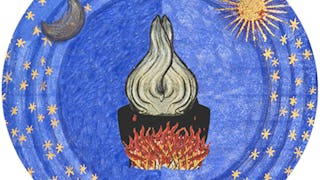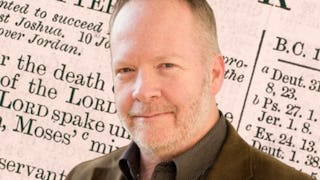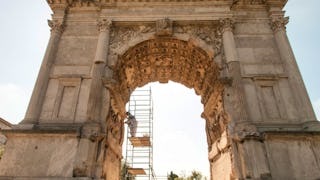Dieser Kurs erforscht die jüdischen, christlichen und muslimischen interkulturellen Beziehungen in Iberien von der westgotischen Ära (6. Jahrhundert n. Chr.) bis zur Gründung des katholischen Spaniens durch Königin Isabel I. und König Ferdinand II. im späten 15. Wir bewerten die vielen Identitäten der Halbinsel, die als christliches Hispanien, jüdisches Sefarad und islamisches al-Andalus bekannt ist. Wir zeichnen die Ursprünge und den Verlauf der Konflikte zwischen diesen Gemeinschaften nach (die muslimische Eroberung Spaniens, die christliche Reconquista, Verbote, die die Vermischung der Völker verhindern, und Vertreibungen). Wir versuchen auch, die Konflikte innerhalb der Gemeinschaften zu verstehen, wie z.B. die Spannungen zwischen den christlichen arianischen Westgoten und den einheimischen katholischen Iberern oder die fundamentalistische nordafrikanische Almohadendynastie, die die religiöse Toleranz des spanischen Umayyaden-Kalifats ablehnte. Wir befassen uns mit der Zusammenarbeit und Koexistenz zwischen diesen Gemeinschaften. Wir erforschen die einzigartige Rolle der jüdischen Gemeinschaft, auf die Muslime und Christen als politische und kulturelle Vermittler sowie als ihre intellektuellen Mitarbeiter angewiesen waren. Wir erforschen die Geschichte, wie die Völker versuchten, lebensfähige unterschiedliche Gemeinschaften zu schaffen und zu verwalten. Während wir diese Geschichte studieren, wird der Honors Track einen Untersuchungsprozess ("The Historian's Craft") anwenden, der das Betrachten, Lesen, Analysieren und Reflektieren von Ereignissen, Völkern, Orten und Artefakten beinhaltet.


Koexistenz im mittelalterlichen Spanien: Juden, Christen und Muslime

Dozent: Roger L Martinez
15.488 bereits angemeldet
Bei enthalten
(137 Bewertungen)
Kompetenzen, die Sie erwerben
- Kategorie: Governance
- Kategorie: Interkulturelle Kompetenz
- Kategorie: Sozialkunde
- Kategorie: Kultur
- Kategorie: Bewusstsein für Vielfalt
- Kategorie: Kulturelle Vielfalt
- Kategorie: Weltgeschichte
- Kategorie: Internationale Beziehungen
- Kategorie: Forschung
- Kategorie: Europäische Geschichte
- Kategorie: Methoden der Forschung
Wichtige Details

Zu Ihrem LinkedIn-Profil hinzufügen
Erfahren Sie, wie Mitarbeiter führender Unternehmen gefragte Kompetenzen erwerben.

In diesem Kurs gibt es 5 Module
In dieser Woche lernen wir die Idee der Koexistenz im mittelalterlichen Spanien kennen. Wir beginnen unser Studium des mittelalterlichen Spaniens mit einem kurzen Blick auf das römische Spanien und lernen dann etwas über die Westgoten. Ergänzende Informationen stellen das mittelalterliche Iberien in den Kontext der europäischen, byzantinischen und islamischen Zivilisationen. Die Ehrenabteilung des Kurses führt in das "Handwerk des Historikers" und die Aufgabe der "Betrachtung" ein.
Das ist alles enthalten
6 Videos29 Lektüren3 Aufgaben1 peer review3 Diskussionsthemen
In diesem Teil des Kurses vertiefen wir unsere Untersuchung des mittelalterlichen Spaniens, um mehr über das islamische al-Andalus (islamisches Spanien) und das jüdische Sefarad (jüdisches Spanien) zu erfahren. Dazu gehört auch eine Studie über die islamische Eroberung des westgotischen Spaniens und die anschließende Entwicklung der Umayyaden-Dynastie. Wir bewerten die Komplexität von Konflikten zwischen religiösen Gruppen und innerhalb religiöser Gruppen. Wir werden Zeugen der interreligiösen Zusammenarbeit. Die islamischen Wissenschaften werden ebenso vorgestellt wie das Goldene Zeitalter der spanischen Juden. Wir sehen uns islamische Kunst und Architektur an. In unserer Ehrenabteilung schließlich setzen wir unsere Studie über das Handwerk des Historikers und die Aufgabe des "Lesens" fort.
Das ist alles enthalten
8 Videos16 Lektüren3 Aufgaben1 peer review1 Diskussionsthema
Zunächst fahren wir mit einer Untersuchung der dritten Hauptkultur der Iberischen Halbinsel fort - dem christlichen Hispanien. Wir suchen nach konkreteren Beispielen für den Einfluss des christlichen Königreichs auf politische, religiöse, soziale, intellektuelle und wirtschaftliche Fragen. Als Nächstes untersuchen wir den Aufstieg des christlichen spanischen Königreichs Kastilien und Leon und den Einfluss von König Alfonso X. "dem Gelehrten". Wir untersuchen, wie die spanischen Christen durch materielle Objekte und Architektur Kultur schufen. Darüber hinaus erforschen wir die Komplikationen, die Christen bei der Verwaltung religiöser Minderheiten in ihrem Land hatten. In der Ehrenabteilung des Kurses setzen wir unser Studium des Handwerks des Historikers und der Aufgabe des "Analysierens" fort.
Das ist alles enthalten
5 Videos16 Lektüren3 Aufgaben1 peer review
Dieser Teil des Kurses befasst sich mit dem Ende der Koexistenz im mittelalterlichen Spanien, das durch die Entstehung neuer Völkertypen (Conversos, jüdische Konvertiten zum Christentum), religiöse Intoleranz und Vertreibungen gekennzeichnet war. Anhand zahlreicher Beispiele werden die Schwankungen in den Beziehungen zwischen Juden, Christen und Muslimen untersucht, als das katholische Spanien Gestalt annahm. Ein besonderes Augenmerk gilt auch den spanischen Archiven, die diese Geschichte bewahren. Wir werfen einen genaueren Blick auf das Ende der convivencia in der Stadt Plasencia, Spanien, und sehen uns eine digitale Videoerzählung an. Da das spanische Mittelalter nicht im luftleeren Raum stattfand, stellen wir Ihnen acht wissenschaftliche Arbeiten aus dem Projekt "Global Middle Ages" vor. Die Ehrenabteilung des Kurses setzt unsere Studie über das Handwerk des Historikers und die Aufgabe des "Nachdenkens" fort und stellt die Musik des Texas Early Music Project vor.
Das ist alles enthalten
15 Videos20 Lektüren2 Aufgaben1 peer review2 Diskussionsthemen
Im letzten Abschnitt des Kurses werden die Studenten des Honors Track aufgefordert, ein historisches Artefakt aus dem mittelalterlichen Spanien (ein materielles Objekt, Architektur oder ein Manuskript) zu interpretieren und zu bewerten. Dieses von Experten begutachtete Projekt ist keine Voraussetzung für den Abschluss des Kurses als regulärer Student.
Das ist alles enthalten
7 Lektüren1 peer review1 Diskussionsthema
Dozent

Mehr von Geschichte entdecken
 Status: Vorschau
Status: VorschauUniversiteit Leiden
 Status: Vorschau
Status: VorschauUniversitat de Barcelona
 Status: Vorschau
Status: Vorschau Status: Vorschau
Status: VorschauYeshiva University
Warum entscheiden sich Menschen für Coursera für ihre Karriere?




Bewertungen von Lernenden
137 Bewertungen
- 5 stars
72,26 %
- 4 stars
18,97 %
- 3 stars
2,91 %
- 2 stars
2,91 %
- 1 star
2,91 %
Zeigt 3 von 137 an
Geprüft am 30. Dez. 2018
well covered subject. However, the audio quality of nearly all of the Spanish speakers was terrible. I speak Spanish but had to turn the volume way up and even then I missed much of what was said.
Geprüft am 5. Aug. 2020
Awesome! I am going to revisit this class readings and keep learning. Amazing videos! Abundance of knowledge shared! Above and beyond of what I thought this class could be! Thank you so much!!!
Geprüft am 23. März 2018
Excellent course. Informative and well-presented in a variety of formats (reading, video, virtual simulations).

Neue Karrieremöglichkeiten mit Coursera Plus
Unbegrenzter Zugang zu 10,000+ Weltklasse-Kursen, praktischen Projekten und berufsqualifizierenden Zertifikatsprogrammen - alles in Ihrem Abonnement enthalten
Bringen Sie Ihre Karriere mit einem Online-Abschluss voran.
Erwerben Sie einen Abschluss von erstklassigen Universitäten – 100 % online
Schließen Sie sich mehr als 3.400 Unternehmen in aller Welt an, die sich für Coursera for Business entschieden haben.
Schulen Sie Ihre Mitarbeiter*innen, um sich in der digitalen Wirtschaft zu behaupten.
Häufig gestellte Fragen
Dieser Kurs ist, wie alle Deciphering Secrets MOOCs, ein gemeinsames Projekt von Dr. Roger L. Martinez-Davila, der University of Colorado System, der University of Colorado-Colorado Springs und der Universidad Carlos III de Madrid (Spanien). Dieses Projekt wurde von der Universidad Carlos III de Madrid, dem Siebten Rahmenprogramm der Europäischen Union für Forschung, technologische Entwicklung und Demonstration unter der Fördervereinbarung Nr. 600371, dem Ministerio de Economía y Competitividad (COFUND2013-51509) und der Banco Santander finanziert. Zusätzliche Mittel wurden von der University of Colorado System, der University of Colorado-Colorado Springs und coursera.org bereitgestellt. Wir sind dankbar für die großzügige formelle und informelle Beteiligung von etwa 20 Institutionen, Organisationen und Akademikern, die Inhalte zum MOOC Coexistence in Medieval Spain beigetragen haben.
Wir danken:
Archivo de la Catedral de Burgos (Archidiocesis de Burgos)
- Matias Vicario Santamaria
Archivo Historico de la Nobleza (Ministerio de Cultura, Educacion y Deporte de España)
- Aránzazu Lafuente Urién
- Miguel F. Gómez Vozmediano
Archivo Municipal de Burgos (Stadtverwaltung von Burgos)
- Milagros Moratinos Palomero
Archivo Municipal de Plasencia (Stadtverwaltung von Plasencia)
- Esther Sanchez Calle
Archivo Municipal de Toledo (Stadtverwaltung Toledo)
- Mariano García Ruipérez
Archivo y Biblioteca de la Catedral de Toledo (Archidiocesis de Toledo)
- Ángel Fernández Collado
- Isidoro Castañeda Todera
Centro Sefarad Israel (Ministerio de Asuntos Exteriores y de Cooperación, Comunidad Autónoma de Madrid, y Ayuntamiento de Madrid)
- Sonia Sanchez
- Esther Bendahan
Simon Doubleday (Hoftra Universität (New York)
Jessica Fowler (IE Schule für Internationale Beziehungen)
Jane Gerber (CUNY-Graduate Center, NYC)
Globales Mittelalter
- Geraldine Heng (Universität von Texas-Austin)
- Lynn Ramey (Vanderbilt Universität)
Hispanische Gesellschaft von Amerika (New York, USA)
- Margaret E. Connors McQuade
- Marcus B. Burke
- John O'Neill
Museo de Burgos (Junta de Castilla y Leon)
- Marta Negro Cobo
Museo Sefardi-Toledo (Ministerio de Cultura, Educacion y Deporte de España)
- Santiago Palomero Plaza
- Carmen Álvarez Nogales
Museo de los Concilios y la Cultura Visigoda-Toledo (Gobierno de Castilla-La Mancha)
- Fernando Luis Fontes Blanco
Museo de Santa Cruz-Toledo (Gobierno de Castilla-La Mancha)
- Fernando Luis Fontes Blanco
Museo Taller del Moro (Gobierno de Castilla-La Mancha)
- Fernando Luis Fontes Blanco
New Mexico History Museum (Staat New Mexico, USA)
- Andrew Wulf
- Josef Diaz
Anthony Puglisi (Cornell Universität)
Revealing Cooperation and Conflict Projekt ("Virtuelles Plasencia")
- Victor R. Schinazi (ETH-Zürich)
- Paddington Hodza (Universität von Wyoming)
- Mubbasir Kapadia (Rutgers Universität)
- Sean Perrone (St. Anselm College)
- Francisco Garcia-Serrano Nebras (SLU-Madrid)
- Roger L. Martinez-Davila
Projekt für Alte Musik in Texas
- Daniel Johnson
- Stephanie Prewitt
- Allison Welch
Universidad Carlos III de Madrid (Spanien)
- Jaime Alvar Ezquerra
- Maria Martin de Vidales Garcia
- Raúl Aguilera Ortega
- Rosa Sanchez Hernandez
Universidad Complutense de Madrid (Spanien)
- Juan Carlos Ruiz Souza
- Susana Calvo Capilla
Universität von Colorado-Colorado Springs (USA)
- Paul Harvey
- Christina Jiménez
- Alycia Williams
- Kellen DeAlba
- Madelyn Husted
- David Walker
Universität von Colorado System (USA)
- Deborah Keyek-Franssen
Universität von Notre Dame Press (USA)
Um Zugang zu den Kursmaterialien und Aufgaben zu erhalten und um ein Zertifikat zu erwerben, müssen Sie die Zertifikatserfahrung erwerben, wenn Sie sich für einen Kurs anmelden. Sie können stattdessen eine kostenlose Testversion ausprobieren oder finanzielle Unterstützung beantragen. Der Kurs kann stattdessen die Option "Vollständiger Kurs, kein Zertifikat" anbieten. Mit dieser Option können Sie alle Kursmaterialien einsehen, die erforderlichen Bewertungen abgeben und eine Abschlussnote erhalten. Dies bedeutet auch, dass Sie kein Zertifikat erwerben können.
Wenn Sie ein Zertifikat erwerben, erhalten Sie Zugang zu allen Kursmaterialien, einschließlich der benoteten Aufgaben. Nach Abschluss des Kurses wird Ihr elektronisches Zertifikat zu Ihrer Erfolgsseite hinzugefügt - von dort aus können Sie Ihr Zertifikat ausdrucken oder zu Ihrem LinkedIn-Profil hinzufügen.
Weitere Fragen
Finanzielle Unterstützung verfügbar,
¹ Einige Aufgaben in diesem Kurs werden mit AI bewertet. Für diese Aufgaben werden Ihre Daten in Übereinstimmung mit Datenschutzhinweis von Courseraverwendet.

